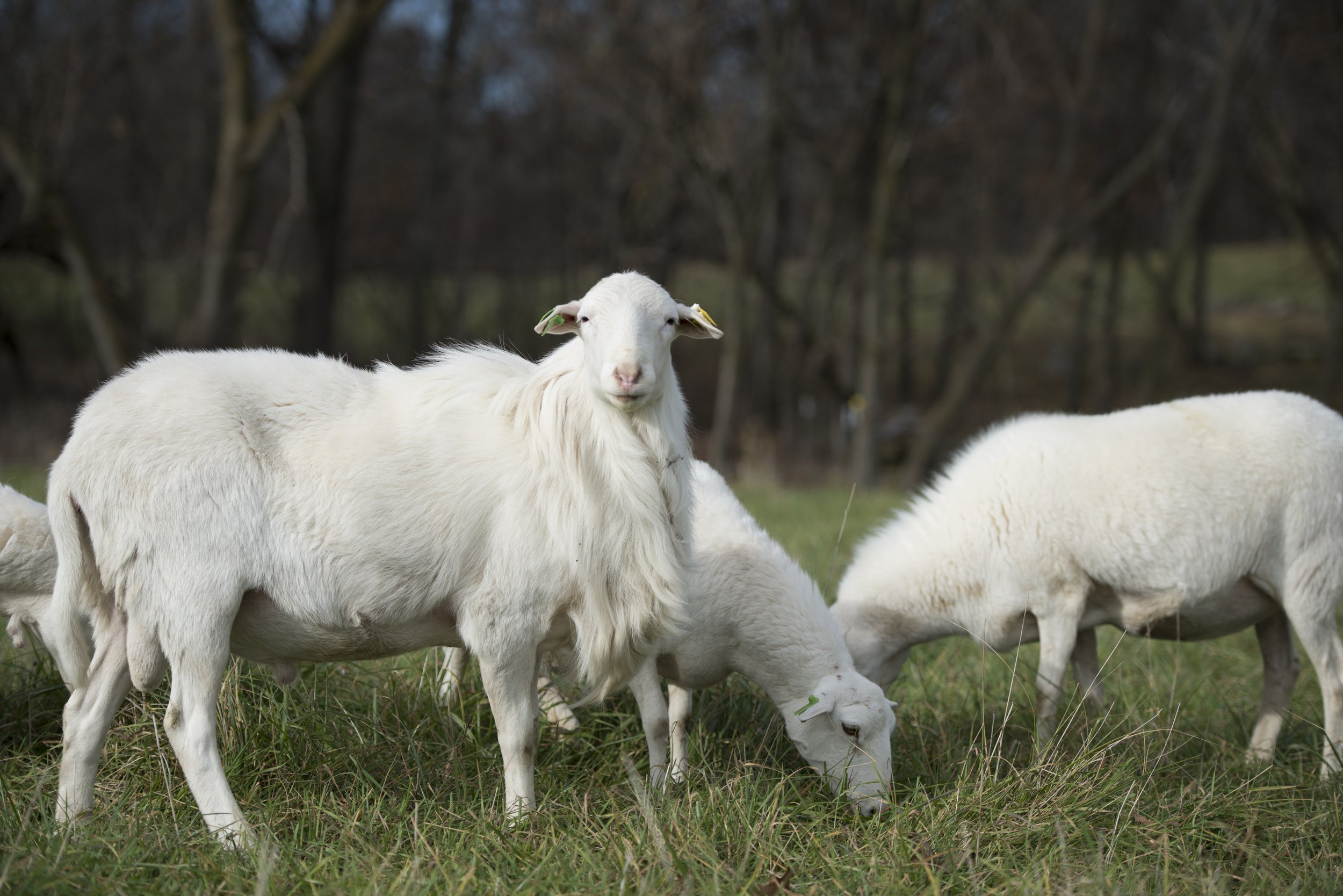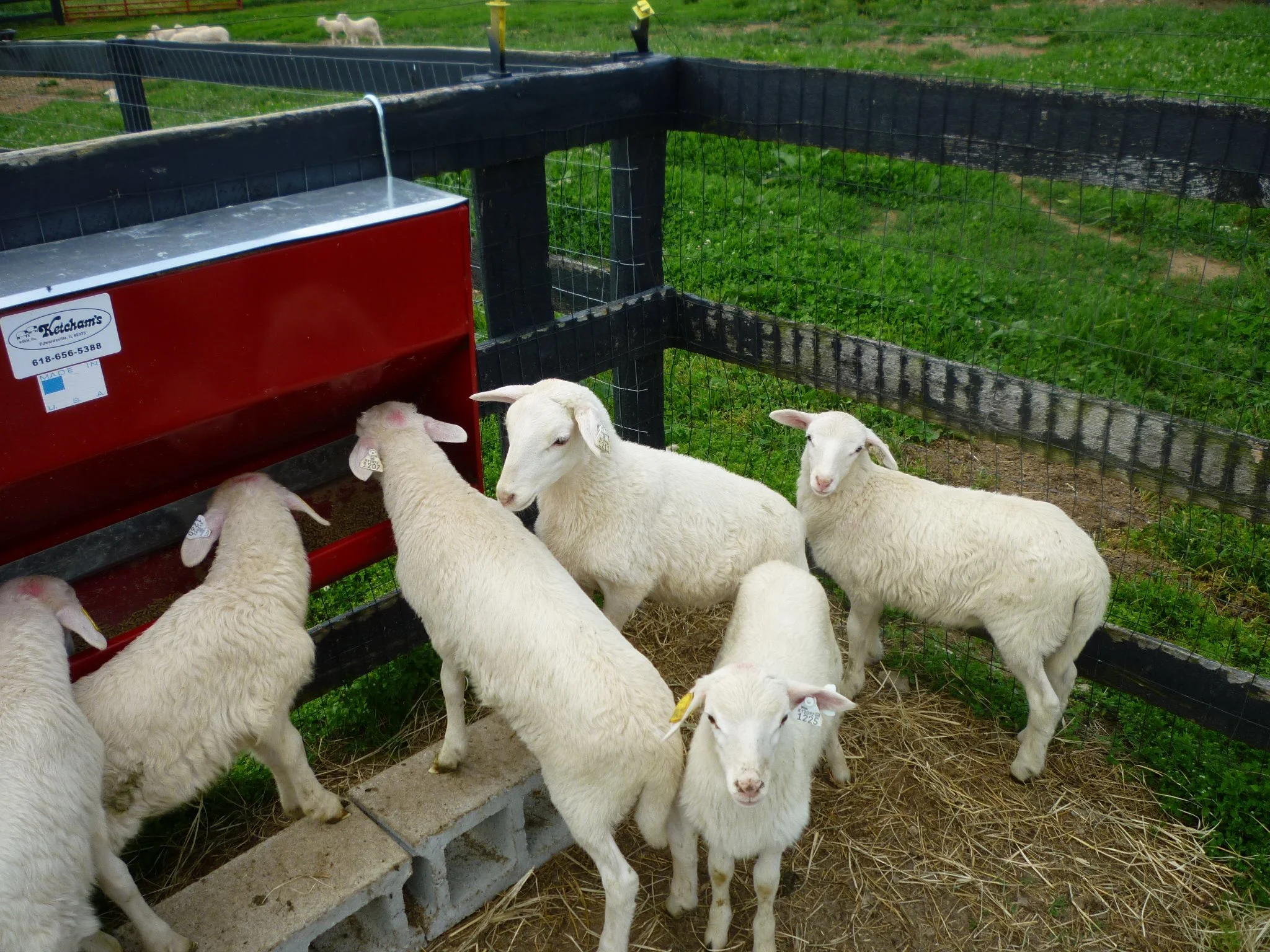
CONTINUING THE POLLED & WHITE LEGACY OF THE 1983 INTERNATIONAL BREED STANDARD
OUR MISSION
Mostly located within North America, we provide a digital space to register, promote, & encourage the breeding of high quality white, polled St. Croix Hair Sheep & to bring their natural qualities to perfection as well as raise awareness for this outstanding sheep breed.
As the international authority in defining the distinguishing characteristics of the St. Croix Hair Sheep breed, we establish specific minimum standards for registering individual animals with our association.
WHY RAISE ST. CROIX HAIR SHEEP?
Between their high quality meat, easy care, & sweet temperament, St. Croix Hair Sheep are perfect for your farm & family.
-
Several university and agricultural researchers have done comparison studies through fecal parasite egg counts and found that St. Croix Sheep seem to have the ability to resist parasite life cycles. Dr. Joan Burke of the Boonesville Arkansas Research Station suggests not using worm medicines on St. Croix Hair Sheep unless there is a loss of body condition. In another study conducted by Gamble and Zajac for the Agricultural Research Service of the USDA and Virginia Tech, the scientists found that St. Croix “demonstrated high levels of acquired resistance to Haemonchus contortus under conditions of experimental or natural infection.” Trichostrongyles of gastrointestinal parasites are one of the most common constraints in sheep production worldwide.
-
In this day and age it is often hard to find wool shearers unless there is adequate numbers of sheep for it to be profitable for the shearer and cost effective for the sheep owner. St. Croix grow undercoats during the winter months in most areas of the United States and naturally shed them by summer with no need to shear.
-
Research statistics gathered by several universities indicate that St. Croix Hair Sheep produce an average of 2.1 births per lambing episode. This means that ewes often have triplet and occasionally quadruplet lambs. St. Croix ewesalso ovulate during all months of the year which allows great flexibility in lamb production planning. Two lamb crops a year are not uncommon and three in 18 months are possible.
-
St. Croix ewes are extremely attentive to their lambs. Even first time mothers have this instinct. Mothers quickly bond with their young which strengthens up to weaning.
-
St. Croix ram lambs reach puberty soon after 3 months of age and must be separated from their mothers soon after 60 days of age to prevent potential impregnation of the mother ewe. Ewe lambs develop first estrus cycle in 7-8 months.
-
Research has shown that St. Croix ewes can lamb at 12 months of age. Some breeders feel that early impregnation will produce a ewe that will have multiple births in later birthing.
-
Because of the structure of the relatively acute angle of the St. Croix ewe pelvis and croup, it is believed to facilitate the ease of lambing common in the breed.
-
St. Croix are lively, but not wild, and exhibit very strong flocking character which has made them extremely popular for training working dogs and use in sheep dog trials.
-
St. Croix ewes exhibit well formed udders and bags. The ewes produce good quantities of milk and have become popular in certain areas of the US for cheese production. Their milk is high in butter fat content. It is not uncommon for ewes to lamb triplets or quad lambs and they are capable of nursing all their lambs without supplemental bottle feeding.
-
St. Croix have good hoofs and are resistant to hoof rot. Unless introduced to heavily infested areas show resistance even in damp climates. In dry climates, they seldom need hoof trimming.
-
Because of the ability to shed their hair, they are fly strike resistant and do not require tail docking as wool sheep do.
-
St. Croix graze and browse. They utilize coarse fodder more efficiently than other sheep. St. Croix prefer weeds and have been used in weed control agricultural programs.
-
Both rams and ewes do not exhibit horns.
-
Because of the docile temperament of rams and ewes, they are easy to handle and manage. This is one reason that the St. Croix breed has become popular for the small farm breeder. St. Croix respond well to guardian dogs and live with them year round. Other predator control animals that work well are donkeys and llama.
-
St. Croix can be found in most all of the United States. They seem to do well in dry hot desert terrain, in colder climates like Canada and northern US States, in humid areas of the southern states and Hawaii, and wet climes as in the Pacific Northwest.
-
St. Croix sheep do not deposit fat within the muscles. Therefore, they produce a lean meat without the tallow taste associated with lanolin wool sheep. The flavor is mild. Taste tests conducted at Utah State University and published in articles in 2004 placed the meat quality of pure bred St. Croix in first place for the grades in flavor, juiciness and tenderness (shear force). The pure bred lamb meat was being compared to that of St. Croix/wool; Callipyge/St. Croix; Dorper/St. Croix; Calipyge/wool and wool/wool.

REGISTER YOUR FLOCK WITH US
Breed registration promotes breed integrity, genetic diversity, and healthy sheep.
Showcase the quality and pedigree of your sheep within our reputable community of like-minded producers.
BECOME A MEMBER
Are you passionate about hair sheep & want to further the quality of your flock? Look no further than becoming a member of the St. Croix Hair Sheep International Association.
WHY CHOOSE SCHSIA?
By joining our association, you join our vibrant & established community of the top St. Croix Hair Sheep farmers and enthusiasts from all around the world.
Whether you are a seasoned shepherd or a beginner starting your flock, our association offers invaluable resources, guidance, and support to help you succeed in the world of sheep farming.
JOIN US ON FACEBOOK
FROM OUR MEMBERS
FEATURED MEMBER FARMS













